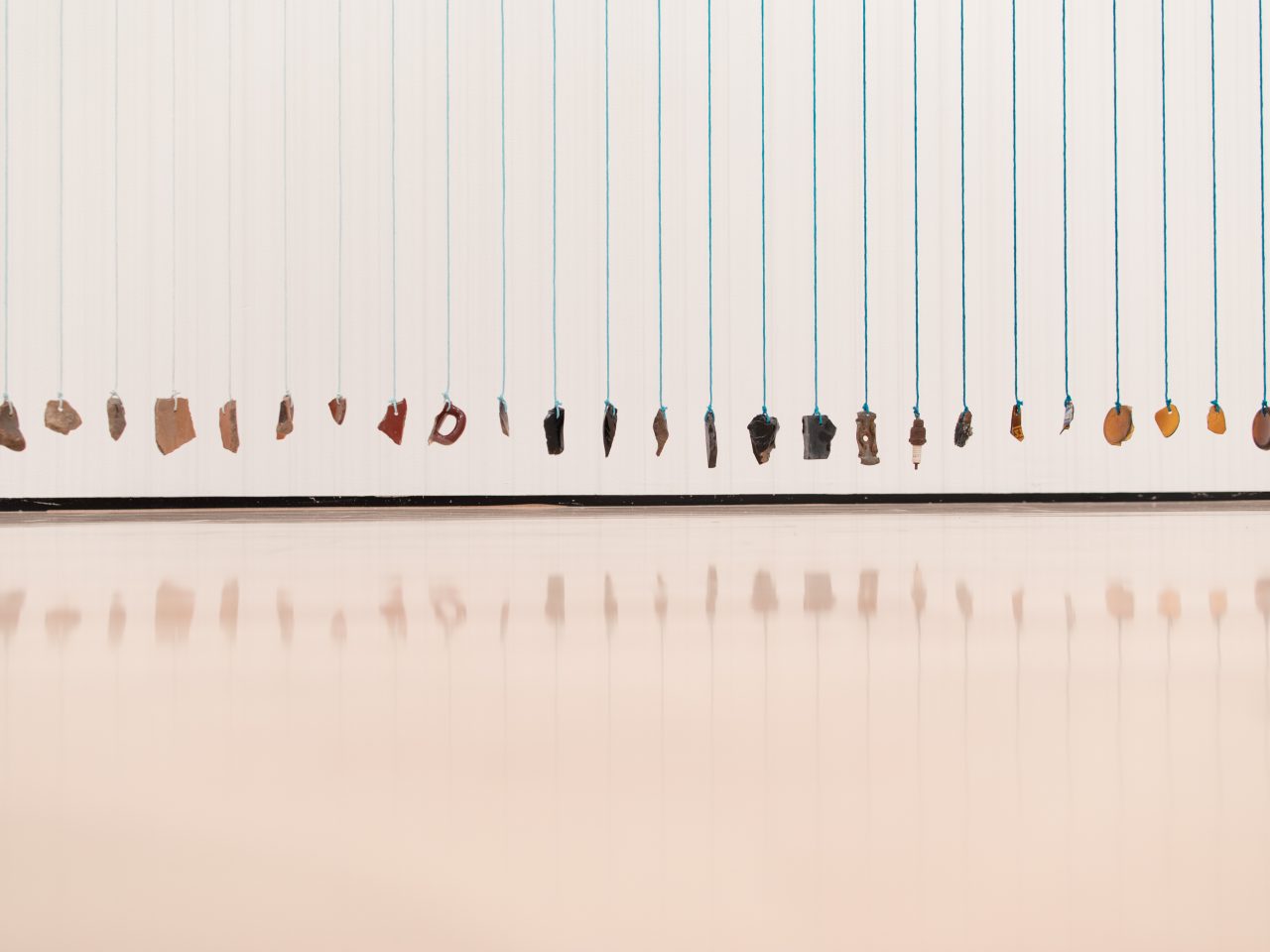Field Station: Claudia Peña Salinas is organized by the Eli and Edythe Broad Art Museum at Michigan State University and curated by Carla Acevedo-Yates, Associate Curator. Support for this series is provided by the MSU Federal Credit Union.
About the Exhibition
Working in sculpture, video, and installation, Mexican American artist Claudia Peña Salinas will use the unique architecture of the MSU Broad to re-create Tepantitla, an ancient pre-Columbian habitational compound in Teotihuacán, Mexico. This ancient site is home to a series of brightly colored murals that narrate and depict the culture’s beliefs and worldviews. They feature, among other things, an ancient rain deity who lived in a sacred mountain—a precursor of the Aztec god Tlaloc and patron god of the city of Teotihuacán. Through the centuries, Tlaloc has become a national symbol of Mexican identity and the focus of many contemporary beliefs, rituals, and public monuments. Images of Tlaloc abound in Mexican art and literature, and sculptures of Tlaloc can be found throughout the Mexican territory. Notably, a monolith of Tlaloc oversees a part of the Rio Grande del Norte river in Mexico between the states of Coahuila and Texas. This river forms a natural border between Mexico and the United States.
Through reproductions and intersecting narratives and materials, and drawing as well from her own personal history, Salinas translates and integrates this ancient archaeological site into the space of the museum. The exhibition addresses pre-Columbian mythology and symbolism as it relates to north-south relations, migration and displacement, and the history of sculpture and painting more broadly.
Field Station
Field Station is an annual cycle of projects that features work by artists at different moments in their careers. With a particular focus on new terrain, the series emphasizes the importance of research by offering a space for artists to develop ideas that may be in the early stages of conception or articulation. Field Station approaches art as a complex language that involves many forms and draws upon different disciplines, from engineering, physics, and agriculture to literature, history, and technology. The notion of a field station specifically points to the importance of experimentation and the idea of the museum as software—a flexible structure that is constantly expanding beyond its walls (the hardware), wherein artists are encouraged to collaborate across disciplines at MSU. The exhibitions change every two months, allowing six artists to participate in an annual program. At the end of each cycle, a publication will be produced to report the “findings” from the Field Station.






